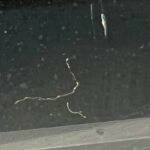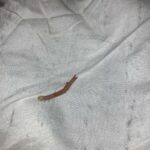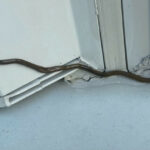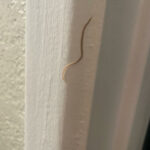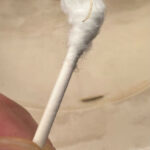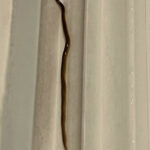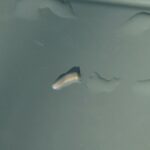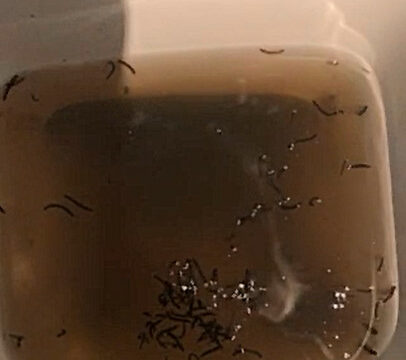
“I pulled this off my cat”, writes this reader in her submission regarding the brown, slimy-looking, worm-like creature pictured below. “Can you identify it?” For starters, we will say that, while we will provide an identification, it should not be taken as 100% accurate or certain. The primary reason for this is because our reader pulled it off our cat. Any worms that are found on or inside people or pets pose a potential medical situation. Since we are not medical professionals, we are neither qualified or legally able to identify organisms that directly affect the health of people or pets. In this case, it is not clear whether or not the worm is affecting the cat’s health: people and pets accidentally get worms on them all the time, just from going outdoors. For that reason, we err on the side of caution. If our reader suspects that this worm may have come from her cat, or that it is in any way negatively affecting her cat’s health, she should consult a vet about it and disregard our identification below.
So, provided that this is not a parasite, or some other kind of worm that could harm our reader’s cat, we would say this looks like a flatworm. Now, there are parasitic flatworms. In fact, around 80% of all flatworm species are parasitic. We cannot say whether or not this one is parasitic, for the very reasons we mentioned before. However, despite such a large majority of flatworm species being parasitic, non-parasitic flatworms species are still very common. On top of that, most parasitic flatworms are not able to survive outside the bodies of their hosts, and cannot be free-roaming like this worm. So, when you find a free-roaming flatworm, it is most likely not parasitic. Of course, we cannot confirm whether or not that is the case for our reader, but we think it is pertinent to mention as we will continue on the assumption that this is not a parasitic flatworm: the alternative would have to be confirmed by a medical professional.
Flatworms are predatory creatures, but they naturally can only eat animals that are a smaller or equal size to themselves. They typically eat worms, larvae, tiny insects, and even other flatworms. They are of no real danger to humans or cats, though the toxin they secrete to kill their prey can still cause an allergic reaction to a bigger animal such as a cat. It might cause pain and/or irritation. If a flatworm secretes this toxin on a larger animal, it is because they feel threatened, not because they are trying to kill them. The best way to handle flatworms is to not handle them at all, at least not with direct physical contact. If this worm was found indoors, we suggest scooping it onto a dustpan with a brush (or some other oblong object) and moving it outside. It will not want to come back into the home unless it is chasing prey, so as long as our reader keeps her house bug-free, the flatworms will also stay out. It is likely that this one just stuck to her cat’s fur when it was outside. Of course, if our reader’s cat is not an outdoor cat, then it found its way in some other way, either on our reader herself, or through an open door or window. Alternatively, it could be that this worm did actually come from her cat, in which case our reader should take her cat to the vet.
In conclusion, we cannot say for certain what this is, because we are not able to identify organisms which are a potential cause for medical concern. Provided that our reader takes her cat to the vet and they conclude that it is not a parasite, we would venture to say this looks most like a non-parasitic, terrestrial flatworm. We hope this helps, and we wish our reader the very best!
All About Worms is always free, always reader-supported. Your tips via CashApp, Venmo, or Paypal are appreciated! Receipts will come from ISIPP Publishing.
You might also find these guys interesting!




